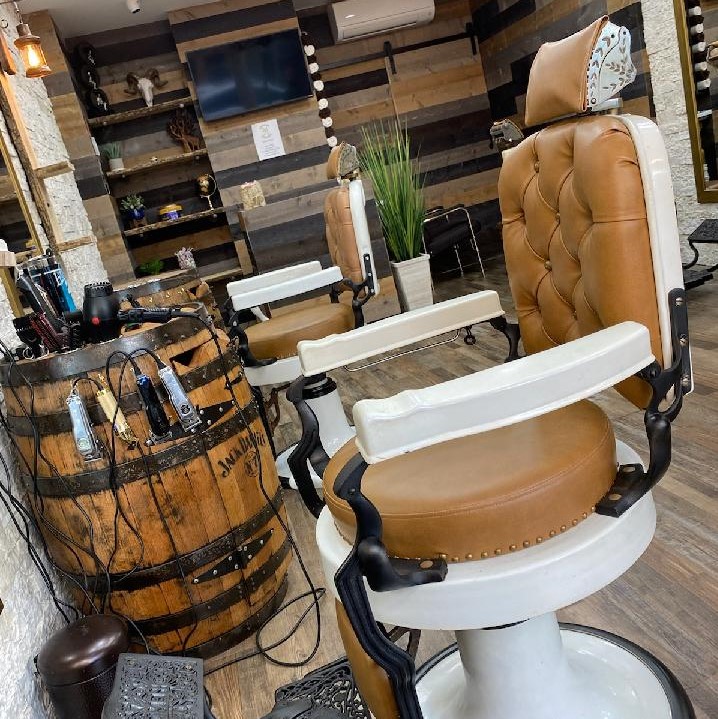Frequently Asked Questions
For achieving a low fade, barbers often prefer using clippers with adjustable blades that allow for precise cutting lengths and seamless blending into the hair. Tapered clipper guards are particularly effective in creating the smooth transition required at lower lengths, typically starting around the nape of the neck and extending to just above the ear. In contrast, high fades require clippers that can handle more aggressive techniques such as fading from longer lengths down to shorter ones seamlessly; therefore, many professionals opt for powerful cordless clippers or heavy-duty models designed for versatility. These tools usually feature sharp stainless steel blades and robust motors capable of tackling thicker hair types while ensuring clean lines along the temples and sides. Ultimately, both styles benefit from quality clipper comb attachments tailored specifically for fade work—low fades favor finer guard sizes like #1 or #2, whereas high fades may utilize larger guards initially before detailing with trimmers or edgers to finalize crisp outlines.
The size of the blade guard plays a critical role in achieving various lengths and styles in fade haircuts, as it directly influences the precision and smoothness of transitions between different hair lengths. A larger blade guard typically leaves more length, which can be essential for creating softer fades or blending longer layers seamlessly into shorter ones. Conversely, smaller guards enable barbers to achieve tighter fades with sharper lines and defined contrast between sections, facilitating intricate designs such as burst fades or skin fades. The choice of guard affects not only the visual outcome but also the technique employed; using specific clipper guards allows for controlled fading techniques like scissor-over-comb or clipper-over-comb methods that enhance texture and shape. Additionally, understanding how each size interacts with varying hair types—be it coarse, fine, straight, or curly—is crucial for tailoring fade cuts that meet individual client needs while maintaining overall balance and harmony within their hairstyle.
To achieve a seamless blend during a fade haircut, barbers often employ several key techniques that enhance the overall appearance and texture of the hairstyle. One common method is the use of clipper over comb, where the barber uses clippers in conjunction with a comb to lift and cut hair at varying lengths for an even transition from short sides to longer top sections. Another effective technique is tapering, which gradually reduces hair length around the temples and neckline while maintaining natural contours. The scissor-over-comb technique allows for precise blending by cutting with scissors as they glide along the surface of shorter hair against longer strands, creating soft edges without harsh lines. Additionally, utilizing fading guards on clipper blades helps create distinct levels between different lengths; this process often incorporates various guard sizes to ensure smooth gradients throughout each section of hair. Lastly, texturizing shears can be utilized post-cutting to soften any remaining hard lines or bulkiness within blended areas, ensuring that every aspect flows harmoniously into one another for a polished finish.
When cutting fades on textured hair, barbers often prefer using wide-toothed combs and specialized fade brushes designed specifically for curly or coily hair types. These tools facilitate the gentle detangling of natural curls while minimizing breakage and ensuring a smooth transition between different lengths in the fade. Additionally, afro picks can be instrumental in elevating the roots to achieve volume before layering techniques are applied. The use of blending shears alongside these tools helps to seamlessly integrate various lengths without creating harsh lines, resulting in a polished finish that accentuates the unique texture patterns. Ultimately, using high-quality materials such as stainless steel clips and ergonomic handle designs enhances precision during fading techniques tailored for diverse curl patterns found within textured hair demographics.
Proper maintenance and cleaning of fading tools is essential for ensuring optimal performance and longevity. Users should regularly inspect their fading brushes, sponges, and airbrushes for any signs of wear or clogging that could hinder functionality. Cleaning agents specifically formulated for paint removal can effectively dissolve residual pigments, while warm soapy water can be utilized to remove dirt and grime from tool surfaces. Additionally, disassembling the components allows for thorough access to hard-to-reach areas where paint buildup may occur. After each use, it is crucial to flush airbrush systems with a suitable cleaner to prevent drying out of materials within the nozzle system. Storing these tools in a controlled environment free from moisture will further preserve their integrity, thus enhancing precision during application processes like blending or shading techniques in various artistic projects. Regularly maintaining inventory by replacing worn-out parts ensures consistent quality results across future applications as well.

